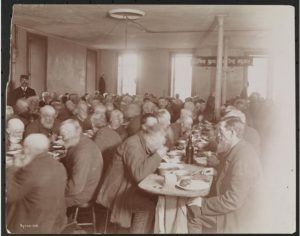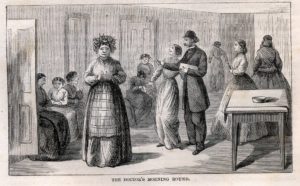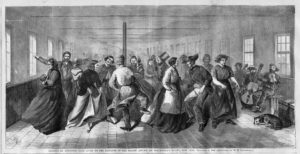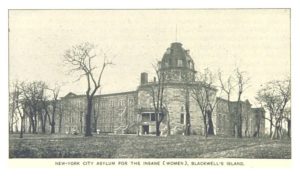
New York City Asylum for the Insane, Men, Ward’s Island
Conditions for newly-arrived immigrants judged to be insane (see last post) were dismal. The emigrant hospital on Ward’s Island was completely inadequate, and it was discontinued after only a few years. New York’s insane population (immigrants included) continued to be housed on these islands, however, and even the most oblivious visitor must have seen that it would be nearly impossible to cure any patient under the conditions there.
“The overcrowding on Blackwell’s Island, even after 400 male patients had been transferred to Ward’s Island, was unbelievable,” says one writer (either a Dr. Parson or Dr. Rowe, who both contributed to a history of New York’s insane asylums). “Not less than 400 beds were made up nightly on the floor.”

Women Eating at Bellevue Hospital, Blackwell’s Island, circa 1896, courtesy Museum of the City of New York. 93.1.1.4918
Ward’s Island sounds even worse. There were too few attendants, too little food and clothing, inadequate seating–and so few common necessities that patients often had to eat with their fingers. “Nights were hideous with noises and profanity,” the doctor continues. “Patients were locked in their rooms . . . straw-filled ticks, reeking and filthy, lay heaped about. Nurses were unknown and the attendants were coarse and inexperienced.”
The litany of failures went on and on. Of course, no one who could get a better job wanted to work there, and the city was forced to hire convicts as attendants. One can only imagine how these employees “managed” their patients. Finally, a new superintendent in charge worked energetically on the patients’ behalf, and conditions began to change.

Crowded Dining on Blackwell’s Island, circa 1896, courtesy Viewing NYC.com
My final post on this topic will detail some of the new superintendent’s work.


